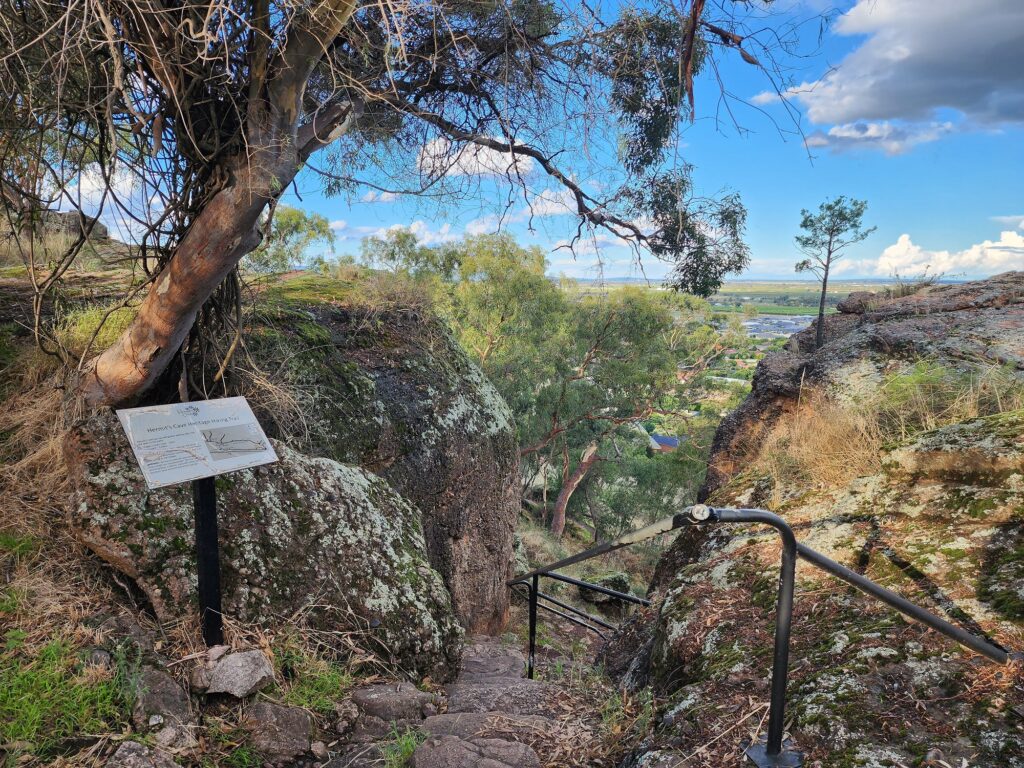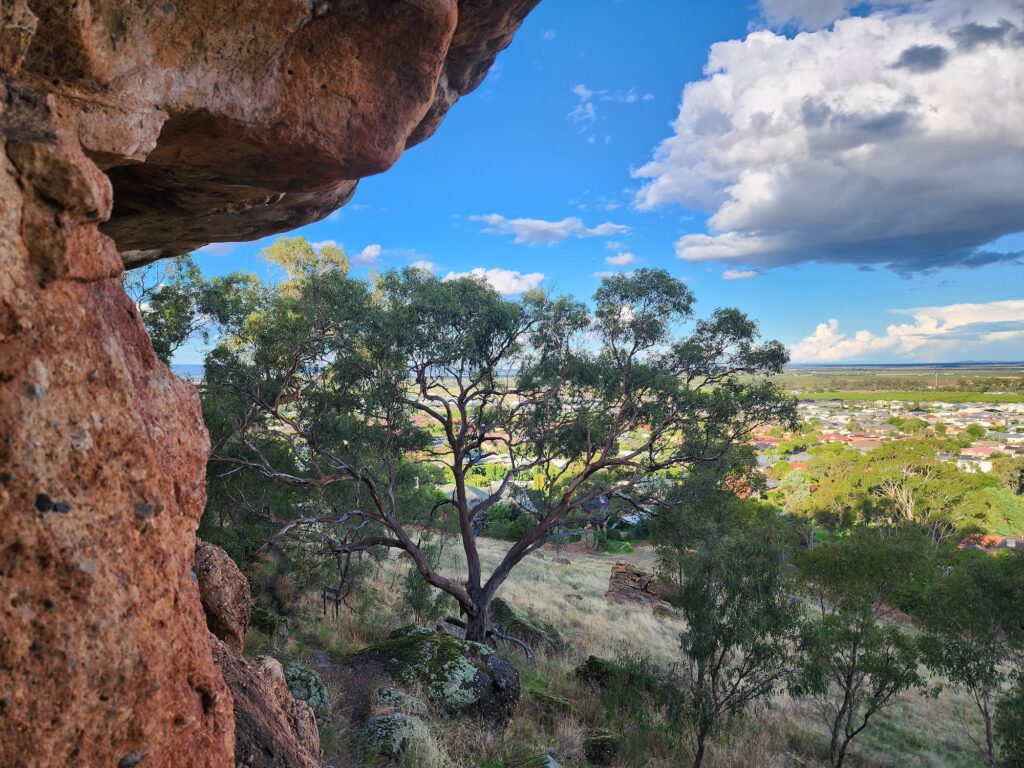Trail time – approximately 35 minutes
WARNING! The paths and steps leading to the various areas of the site are, in places, steep and hazardous, especially when wet. Visitors are cautioned to take care. Some areas of the site may not be accessible to infants, the aged or disabled.
Griffith City Council has formed the Scenic Hill User Group Committee who will be working towards bettering the site and a solution for on-going maintenance. If you would like to submit any suggestions or feedback, please email here: visitgriffith@griffith.com.au
Please remember that this is a heritage protected site – take nothing but pictures, leave nothing but footprints.
The Story of Valeri Ricetti
This 1.07 km self-guided trail takes you past some of the cave-like rock shelters, stone walling and terraced gardens that were built by the hermit, Valeri Ricetti, a young Italian migrant.
Ricetti arrived in Australia in 1914 at the age of 16 or 17. After several years of travelling around doing casual labouring jobs, Ricetti settled on the rocky escarpment of Scenic Hill to make it his home from the late 1920s until 1952.
In the tense atmosphere of WWII, Ricetti’s unusual lifestyle and Italian origins were considered suspicious. His premises at Scenic Hill were searched by the authorities and despite nothing being found, Ricetti was arrested and interned in NSW as a Prisoner of War, from March 1942 until December 1943.
On his release, Ricetti moved in with a local farming family, the Ceccatos, where he lived and worked for the next 8 years. However, during this time he continued to visit and spend time at Scenic Hill which he considered his true home.
In May 1952, in deteriorating health, Ricetti returned to Italy to visit his brother. He had every intention of coming back – he had bought a return ticket and left his savings in the Commonwealth Bank. However, a few months later, notice was received of his death. Whilst his body rests in his homeland, legend has it that his soul remains on ‘la mia sacra collina’.
It is not known exactly when Valeri Ricetti started to live on Scenic Hill but once people knew the ‘Hermit’ was there, the site became a popular tourist attraction.
Some of the locals who knew Ricetti say that on some days he enjoyed spending time with visitors and on others the mysterious recluse was nowhere to be found.
The Chapel
The Chapel area with its natural high domed ceiling and painted religious iconography is reminiscent of the sacred grottos found in Roman Catholic countries in Europe. Ricetti referred to Scenic Hill as ‘la mia sacra collina’ (my sacred hill).
The Garden
In Ricetti’s time, the Garden area, with its European-like stone terracing, was lushly planted with both edible and ornamental vegetation. Ricetti grew grapevines, peaches, figs, bananas, lettuces, tomatoes as well as sweet peas and roses.
Have a look for the in-ground stone-lined cisterns he built to capture rainfall run-off in order to water his garden.
The ‘gun post’
Ricetti called the circular structure in front of the Main Cave his ‘gun post’ even though there was no gun. He accessed this fort-like structure using a ladder like a drawbridge.
The Main Cave
Local ‘old timers’ remember that Ricetti used the Main Cave as a bedroom.
As you can see, it’s not really a cave but a deep rock shelter that has been enclosed with stone walling.
The adjoining ‘kitchen’ area once had a roof made from scraps of metal sheeting and timber as well as a fine hearth for cooking on.
The Main Cave, like the carefully planted terraced garden around it, was kept beautifully neat and tidy. The walls of the cave were decorated with rock paintings of daisies, hearts and anchors and even film posters.
As you walk around, look at the size and quantity of worked stone blocks and think how one person, working on his own, might have created this unique domesticated landscape.
Pick up a Hermit’s Cave Heritage Trail flyer from the Griffith Tourism Hub or view below.




